By Sarah Lozanova, Solar Energy Writer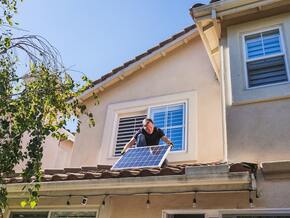 There are enough solar energy systems in the United States to power nearly 22 million homes. Now that solar electricity is relatively mainstream, many solar homes are on the real estate market. So, how do solar panels and the often-lower energy costs that come with them impact a home’s worth? Numerous studies show that solar panel systems increase property values. Let’s explore what makes solar panels so attractive to home buyers and review some data that puts a number on the impact of a solar energy system. Does Solar Increase Home Value?Multiple factors can impact home prices. Location is usually high on home buyers’ list because it affects commute time, school choices, recreational activities and many other aspects of daily life.
The size and condition of the home are also important. Potential buyers, real estate agents and home inspectors will take a close look at everything from kitchens to closet spaces to HVAC units. They’ll also keep an eye out for upgrades that make the home a better value and might improve quality of life. By Sarah Lozanova, Solar Energy Writer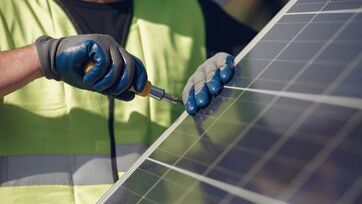 An estimated 6% of the residential solar systems installed in 2020 have battery storage, but this number varies widely by location. In Hawaii, where there is a lack of net metering laws, approximately 80% of home solar power systems have energy storage. Solar batteries are also more prevalent in California than in other states because of the Self-Generation Incentive Program and public safety power shutoffs designed to prevent wildfires. The prices of advanced lithium-ion solar storage batteries have fallen in recent years, making them more affordable to homeowners. In addition, some states or utilities offer battery rebates or tax incentives, including California, Hawaii, Illinois, Maryland, Massachusetts, and Oregon. But some may require the homeowner to install the solar system and batteries simultaneously. As storage systems increase in popularity, many homeowners want to add batteries to their existing solar panel systems. Solar batteries are especially appealing in areas with an unstable electric grid, such as areas regularly impacted by severe weather. Also, some homeowners can reduce their electric bills more with a battery due to the utility rate structure in some areas. Let’s explore this topic so you can better serve your existing customers. By Sarah Lozanova, Solar Energy Writer The nation’s aging electrical grid is struggling in the face of extreme weather. Water shortages from drought reduce hydroelectric power output from dams, and heat waves boost electricity consumption due to increased air conditioner use. Severe storms can cause grid failures due to downed wires, and some utility companies resort to power safety shutoffs to prevent wildfires when conditions are ripe. Unfortunately, blackouts are a growing reality for many Americans. Yet, our homes are designed to have electricity, and living without it, even for a few hours, can be challenging. As a result, our basements can flood, mechanical systems shut off and home offices become unproductive. Many households are looking for alternatives to the power grid to keep the lights on, and using solar energy can be an attractive option. However, how you might use solar panels during a power outage depends on both your solar energy equipment and how it’s connected to the grid. Types Of Solar Homes And How They Handle OutagesYour solar panel system design will determine if and how you can have electricity during brownouts and blackouts. This varies based on whether you have battery energy storage.
By Sarah Lozanova, Solar Energy Writer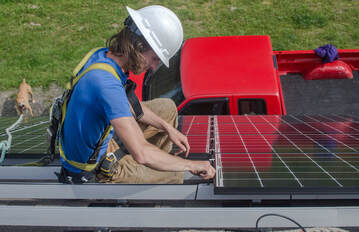 Although solar energy has skyrocketed in popularity in recent years, many people aren’t in the position to install a rooftop solar system. Renters, apartment dwellers, condominium owners, low-income households, and people with shaded roofs are largely left out of the solar revolution. Enter community solar farms. This ownership structure is making solar power available to households, businesses, and organizations that couldn’t access it before. It is a rapidly growing segment of the renewable energy market, especially in certain states. There are currently 4.9 gigawatts of installed capacity in the United States, or enough to power about 3.7 million homes. What Is Community Solar? Community solar projects give subscribers many of the same benefits of solar power without having a system on-site. They produce electricity for hundreds or even thousands of nearby homes and small businesses. Households and companies can join a community solar farm by subscribing to a portion of the project’s monthly output. The solar power produced from the community solar project is typically discounted compared to typical utility company electricity rates. Consequently, subscribers can often lower their electricity bills while also helping the planet. Although the details vary by solar project, many require no upfront investment and offer flexibility if you move within the same electric utility territory. By Sarah Lozanova, Solar Writer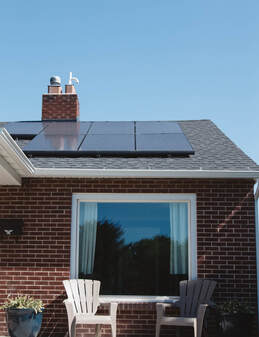 Solar energy installations have skyrocketed in recent years; it’s likely there are some in your neighborhood. One of the reasons solar power has become so popular is the cost of solar systems has plummeted in the last decade or two. As a result, many more households can afford to install solar. But just how much will a solar system cost? Many homeowners want to get a sense of the cost before having a solar company inspect their property or giving away their personal information online. Ballpark Solar System Cost According to Energy Sage, the average solar system costs about $2.77 per watt installed. This price covers labor, permitting, solar panels, the inverter, and other solar equipment, but prices may vary by the installer, solar panel location, and equipment. The size of your solar energy system will be determined by your total electricity usage, available space for installing solar panels, and budget. To determine how much electricity you use, review your electric bills for the past year or more. The average home needs about a 6 kilowatt (kW) solar system, which costs roughly $17,000 before incentives. If you can take advantage of the federal solar tax credit in 2022, you can receive a tax credit for 26% of the total system cost. If you install your system in 2023, then the solar tax credit is 22% of the total cost. Speak with a tax expert to ensure you can take advantage of the tax credit. By Sarah Lozanova, Solar Writer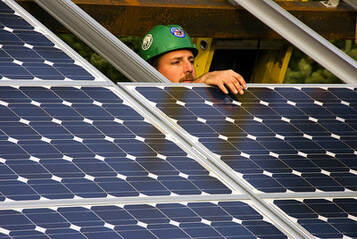 Despite the COVID-19 pandemic, the solar energy industry has been remarkably resilient. Rapid technology improvements, government incentives for solar panels, and the increasing competitiveness of solar energy storage batteries have helped boost clean energy deployment. Although 2022 does seem like a very promising year for solar energy installations, there are some potential hurdles along the way. So, what should you expect for 2022, and how can you prepare? Identifying upcoming trends can help your company be adaptive to the changing business climate in 2022 and beyond. Solar Technology Will Continue To Improve Solar panels continue to become more efficient, enabling homes and businesses to produce more electricity in a limited space. Increasingly, solar PV panels are lighter weight, have a sleeker appearance and thinner profile, making them more visually appealing. In addition, solar shingles are becoming more widespread, and there are more available products than ever before. Despite these improvements, solar energy costs seem to be remaining relatively stable. 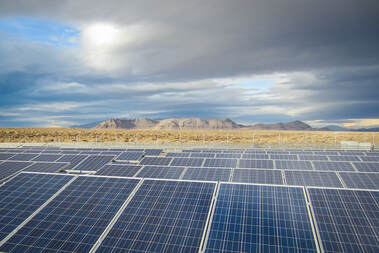 By Sarah Lozanova, Solar PV Writer U.S. solar generation capacity is soaring. Construction began recently on the Samson Solar Energy Center, the largest planned solar energy farm in the United States. When completed, the solar farm will have 1,013 megawatts of generating capacity. This solar farm will be considerably larger than the 690 MW Gemini solar project with battery storage under construction outside of Las Vegas, which had been the largest project in the U.S. Invenergy is developing the Samson solar farm, which will span three counties in Northeast Texas near the Oklahoma border. The project will create an estimated 600 construction jobs and $450 million in tax revenue and landowner lease payments. Developers are planning construction in five phases, with a 2023 expected completion date. Texas is a leader in renewable energy production in the U.S. due to its excellent solar and wind energy resources. It leads in the nation in installed wind energy capacity and trails California for installed solar energy capacity. 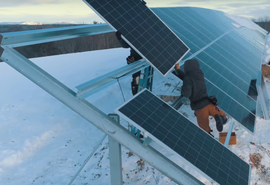 By Sarah Lozanova, Solar PV Writer There is now enough installed solar energy capacity in the U.S. to power 13.5 million homes, and this amount is expected to double in the next five years. The solar energy industry is part of a very dynamic market. Many factors — including government policies, fossil fuel costs, solar energy technology advances, commodity prices, and even public awareness of the climate crisis — impact solar energy deployment across the globe. What’s in store for the year ahead? Let’s explore some trends in solar energy to better understand what is on tap for 2020. Solar Battery Prices Are Falling Solar energy is an intermittent energy source. This means that solar panels produce power when the sun is shining and not when it isn’t. Energy storage allows the solar system to supply power when the sun has set or in cloudy weather, expanding the capabilities of solar energy systems. There are two main types of solar batteries: lead-acid batteries (like you have in your car) and lithium-ion batteries. The latter is far more advanced, longer-lasting, and requires less maintenance. Not surprising, lithium-ion batteries have a higher upfront cost, but the price has been decreasing significantly in recent years. The cost of lithium-ion battery storage fell 35 percent from the first half of 2018 to now (December 2019) and 76 percent since 2012. This downward price trend is good news for renewable solar energy in 2020 — and it’s likely to continue. Natural gas plants are often used to meet peak energy loads because they can more easily be turned on and off than coal or nuclear power plants. Lower costs make it easier for intermittent renewable energy sources — such as wind and solar — to be cost-competitive with dispatchable fossil-fired power plants. Price decreases in utility-scale battery banks now make solar plus energy storage competitive in many areas on price alone. Battery banks can make it unnecessary to fire up power plants during times of peak demand, reducing fossil fuel consumption. The greater the capabilities of solar, the less attractive and financially viable these peaker power plants become. On the residential side, more homeowners are relying on solar systems with battery storage for emergency power during grid outages than ever before. This is an especially attractive option in areas prone to extended power outages due to natural disasters or with inadequate utility infrastructure, like Puerto Rico. Read More... Image Credit: Sundog Solar Trends in Solar Energy - Clean Energy Writer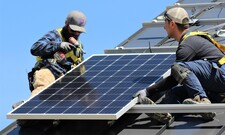 By Sarah Lozanova, Solar PV Writer The solar energy industry is booming across the United States and beyond. As jobs in the coal industry slump, careers in solar energy are taking off. In the U.S., 855,000 people were employed in the renewable energy industry either directly or indirectly in 2018. Over 240,000 of these people work in the solar energy industry, and this number is growing quickly. The U.S. trails China and Japan in solar energy jobs, with China employing 2.2 million or 61 percent of the global total. Although solar jobs exist across the U.S., California, Florida, Massachusetts, New York, and Texas lead the way in solar industry jobs. To learn about the breakdown of solar jobs by location and sector, visit the Solar Job Census map. Reports for individual states highlight how many jobs exist in installation, manufacturing, distribution, and operations and maintenance. In most states, installation jobs lead the sector in total jobs. If you are interested in entering the solar energy field, there are a variety of different careers available. Like any other industry, the solar energy industry needs dedicated professionals to help it thrive. Let’s look at some of the career options in solar energy. Solar System Installer Solar installers put solar panels on the roof and connect them to the electric panel. This job requires some training, which you can often get on the job, and general construction and electrical experience are helpful. Installation classes and training programs are available through solar manufacturers, solar organizations, or programs at community colleges and trade schools. Obtaining NABCEP certification could also help your career advancement as it the most recognized certification in the solar energy industry. Read More... Image Credit: Sundog Solar Careers in Solar Energy - Freelance Copywriter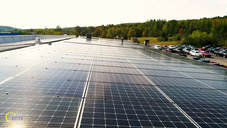 By Sarah Lozanova, Clean Energy Writer Despite serving a valuable purpose to us all, tech companies have been criticized for years for their exorbitant energy consumption. Data centers are the backbone of the internet and keeping all that information just a click away requires a lot of electricity. A transition to renewable sources is underway, which cloud users can encourage by choosing their online service providers that source clean energy. The ‘Dirty Cloud’ Data centers use up to 3 percent of all U.S. electricity and the information technology sector is responsible for 7 percent of global electricity consumption. The term “dirty cloud” was even coined to refer to the coal and other high-emissions fuel sources that power cloud computing. Global internet traffic has tripled in the last four years and it is anticipated to triple again by 2022, according to the International Energy Association. The IT sector isn’t keeping up with its rapid growth,” says Gary Cook, the senior corporate campaigner on the Climate & Energy for Greenpeace. “More companies are making renewable energy commitments but energy demand growth by the industry is outstripping their renewable energy growth. This is an urgent issue to address the use of fossil fuels given the climate crisis.” Since 2009, Greenpeace has been putting pressure on some of the more polluting tech companies while praising greener ones. When examining the energy footprint of tech companies, some clearly lead the way in the corporate use of renewable energy deployment, energy transparency, advocacy, and energy efficiency innovations. Read More... Greening the Cloud with Renewable Energy By Sarah Lozanova Most of us think of solar energy as consisting of photovoltaic solar panels, which make up 95 percent of the solar energy market. Solar towers, however, are proving to be a promising technology for commercial-scale installations as well. Construction is now underway on the Ashalim Thermal Solar Power Station, where a vacant stretch of the Negev desert in Israel will be home to a 787-foot solar tower. This is a big step in achieving Israel’s goal to source 10 percent of its energy from renewables by 2020. The solar tower will produce enough electricity to power 121,000 Israeli homes, or meet 1 percent of Israel’s total electricity needs. Although the project is privately funded, the Israeli government has agreed to buy the power at above-market prices. Construction is expected to conclude late next year. Read More... |